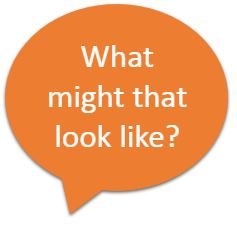| FIRST LEVEL | TECHNOLOGIES | |
| Experiences and Outcomes | Benchmarks | |
| Organiser – Computing Science | • Simplifies problems by breaking them down into smaller more manageable parts.
• Constructs a sequence of instructions to solve a task, explaining the expected • Creates programs to carry out activities (using selection and fixed repetition) in a visual programming language. • Identifies when a program does not do what was intended and can correct errors/bugs. • Evaluates solutions/programs and suggests improvements. |
|
|---|---|---|
| Designing, building and testing computing solutions | ||
| I can demonstrate a range of basic problem solving skills by building simple programs to carry out a given task, using an appropriate language.
TCH 1-15a Links to: Numeracy & Maths – Angles, Symmetry & Transformation MTH 1-17a, Information Handling – Data & Analysis MNU 1-20a & b Literacy & English – Reading – Understanding, Analysing & Evaluating LIT 1-16a |
||
 |
Progression |
|
| Through a variety of activities & play across my learning I can/am able to | Through a variety of activities & play across my learning I can/am able to | Through a variety of activities & play across my learning I can/am able to |
| With support, begin to explore how block code can be used to build simple programs which carry out given tasks e.g. reading age appropriate block code tutorials in Hour of Code. | Explore how to break down a range of problem solving tasks into smaller, more manageable parts e.g. using Scratch Junior to solve problems in various contexts | Solve a range of basic problems by breaking them down into smaller more manageable parts. |
| With support, begin to break tasks or problems down into smaller, more manageable parts to solve task e.g. using Scratch Junior to solve a given problem | Sequence instructions & build simple programs which solve a range of tasks or problems | Demonstrate & explain how the sequence of instructions in my programs will achieve the outputs required. |
| Begin to sequence instructions & build simple programs which use selection & fixed repetition (loop) in block code e.g. when a program is run & a choice of objects is selected, it beeps or changes colour. | Build simple programs in a visual programming language (block code) which use selection & fixed repetition (loop) to solve or carry out a range of tasks. | |
| With support, observe & begin to evaluate simple block code sequences or programs to identify errors or improvements. | Observe & evaluate simple block code sequences or programs to identify errors or improvements. | Identify any errors (begin to debug) or suggest improvements.
Explain & evaluate whether a program carries out a given task. |
|
“When applying their skills and knowledge about Computing Science learners might: * Apply their knowledge and understanding of computational thinking and programmable devices in fun and relevant ways. This could be through contextual challenges, such as: – Lego WeDo challenges – these require learners to develop a solution to a challenge, then build the model and create code to control it In designing Computing Science challenges,ensure that: * Through these challenges, learners will create courses for each other that allow for decisions and choices to be made – “should I go left or right to avoid the obstacle?” or “is it better to go fast or slow through the cone slalom?” * Learners will discuss the problem, design and test a solution and then identify any errors and possible solutions. This will provide an opportunity to promote perseverance until a solution is reached. These processes can be explored parallel to other, real-world activities,such as manoeuvring around an assault course, making a sandwich or building a house with construction blocks * Learners can compare their instructions with other learners’ – are all scripts the same? Is it possible to have different instructions for same outcome? Are there patterns?“ |
||
|
|
||
|
|
||
|
|
||
|
|
||

